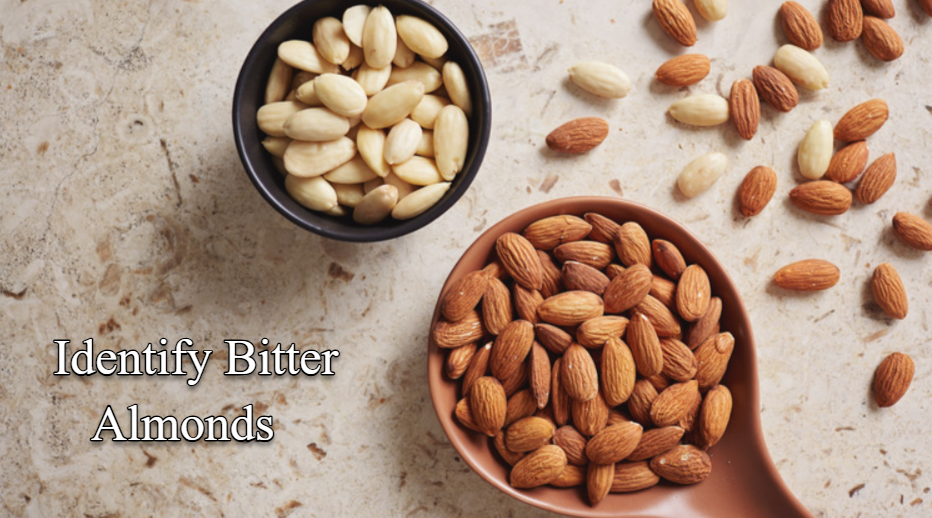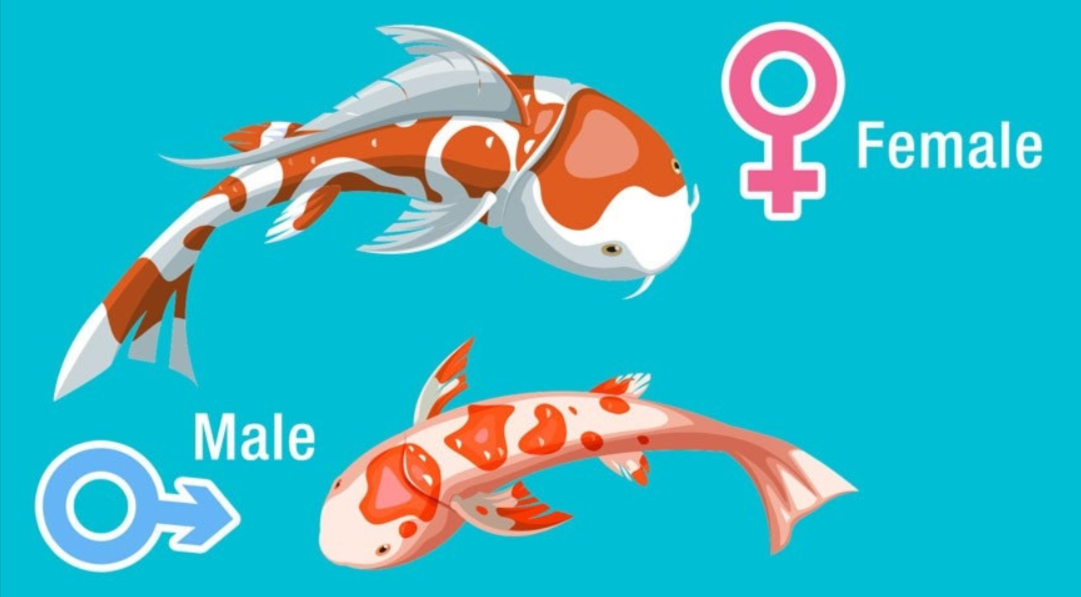Life Style
International Day of Conscience: Date, Origin, role and Significance

This International Day of Conscience, celebrated every year on April 5 and serves as a global reminding of the role of conscience in encouraging peace and harmony as well as sustainable development. It was declared through the United Nations General Assembly in 2019 in Resolution 73/329, this day highlights the importance of conscience in the individual in encouraging moral behavior and fostering a fair and compassionate planet.
The celebration highlights the link between ethics, conscience, and the universal human rights of dignity equal rights, justice, and equality. It encourages people to consider their choices take ethical decisions and join together to tackle global issues.
The Significance of the International Day of Conscience
1. Fostering Peace and Harmony
Conscience encourages people to be ethical and to resolve disputes through dialogue and understanding, helping to promote peace across the globe.
2. Encouraging Responsibility
This day reminds people as well as communities about their moral obligation to make decisions that are beneficial to both the environment and society.
3. Addressing Global Challenges
By highlighting the significance that conscience plays, it spurs actions to tackle urgent issues like poverty and inequality climate change, poverty, as well as human rights abuses.
4. Strengthening Social Cohesion
A common dedication to ethical conduct fosters solidarity and strengthens bonds among communities, individuals and even nations.
5. Promoting Sustainable Development
Conscientious decisions are aligned to the guidelines of the United Nations Sustainable Development Goals (SDGs) to ensure advancement that is beneficial to both the humans and the environment.
The Origin of the International Day of Conscience
The concept for this International Day of Conscience was created by the Federation of World Peace and Love (FOWPAL) and was backed by numerous nations and organizations. In recognition of the impact of conscience in solving global problems The United Nations General Assembly adopted Resolution 773/329 on 25 July 2019, 2019, naming that April 5, 2019 is the International Day of Conscience.
The proclamation highlights the UN’s determination to promote peace acceptance, tolerance, and understanding by ensuring ethical decision-making and moral awareness.
The Role of Conscience in Society
1. Guiding Moral Behavior
Conscience functions as an internal compass to help individuals discern between the right and wrong, making decisions that are in line with ethical standards.
2. Resolving Conflicts
Through fostering empathy and compassion conscience can help individuals and groups to resolve disputes with respect and in a constructive way.
3. Promoting Social Justice
People’s conscience drives them to fight for equality as well as human rights and the end of discrimination and inequity.
4. Encouraging Environmental Stewardship
A sustainable approach that is driven by conscience stresses the importance of protecting natural resources as well as combat climate change to ensure the future of our children.
Observing the International Day of Conscience
This International Day of Conscience is commemorated by a variety of events and initiatives around the world that promote awareness, reflection and action
1. Educational Programs
Universities, schools and community associations offer seminars and workshops to help students understand how important conscience is in making decisions for oneself and in society.
2. Community Dialogues
Discussions and forums allow people to discuss ethical questions and discuss ways to address global challenges.
3. Acts of Kindness
The public is encouraged to engage in acts of generosity and kindness, which demonstrate the positive effects of actions that are based on conscience.
4. Cultural Events
Music, art and literature are utilized to stimulate reflection and encourage the ideals of peace compassion, empathy, and moral accountability.
5. Media Campaigns
Social media platforms as well as traditional media amplify messages on the significance of conscience. Often, they do this by using hashtags such as #ConscienceDay and #ActWithConscience.
The Relevance of Conscience in Modern Times
1. Combatting Inequality
Consciousness calls for the elimination of systemic inequality and making sure that the most marginalized communities are able to access the opportunities as well as resources.
2. Promoting Ethical Leadership
In business, politics as well as other fields morally-driven leaders place the interests of others in the face of personal profit, encouraging the trust of their followers and ensuring accountability.
3. Navigating Ethical Dilemmas
Technology and globalization pose complicated challenges, conscience can help individuals and companies make decisions which are in the interest of the dignity of people and their well-being.
4. Building Inclusive Societies
Conscience encourages tolerance and inclusivity, thereby encouraging society to accept diversity and appreciate different viewpoints.
How You Can Participate
1. Reflect on Your Actions
Be sure to consider how your actions are in line with ethical values and enhance the wellbeing of other people.
2. Engage in Dialogue
Participate in discussions on ethics, conscience and global issues to discover new perspectives and encourage positive transformation.
3. Support Ethical Practices
Select companies, organizations and leaders that are focused on the environment and social responsibility.
4. Advocate for Change
Increase awareness of social justice issues, and encourage others to take a conscience-based approach in their communities.
5. Incorporate Acts of Kindness
Engage in small, meaningful actions which show compassion, empathy and solidarity with other people.
The Role of the United Nations
The United Nations promotes the values of conscience through programs which promote peace, equality as well as sustainable development. Its main efforts are:
- Fostering Education: Promoting schools to incorporate lessons in morality, ethics along with global and civic responsibility.
- Promoting Dialog: Facilitating international cooperation to resolve ethical challenges and conflicts.
- Advocate for Human Rights: Supporting policies and programs that are based on human rights and justice.
Looking Ahead
This International Day of Conscience serves as a reminder that both individual and collective decisions guided by conscience make a more fair peaceful, peaceful, and sustainable world. Through raising consciousness, promoting ethical behavior and promoting inclusiveness, we can solve the global challenges and create stronger, more unified communities.
Conclusion
The International Day of Conscience underscores the impact of conscience in creating a better world. It encourages communities, individuals and countries to reflect on their choices as well as to embrace ethical values and collaborate to help promote justice, peace and sustainable development.
In the midst of this day, let’s recognize the importance of our conscience in our lives daily and resolve to make decisions that are based on the wellbeing of our fellow humans and the earth. A one that is guided by conscience creates one that is compassionate and unity. It is also a world of optimism.
Life Style
How to Identify Blue Cut Lens? Complete Guide

With the increase in screen time on laptops, smartphones and TVs, shielding your eyes from damaging light is more essential than ever before. One solution that is popular can be found in the Blue Cut Lens, which is a particular type of lens for eyeglasses that is designed to block or block harmful blue light produced by electronic devices.
The exposure to blue light, particularly in the night, can lead to headaches, eye strain blurred vision and can even disrupt sleep cycles. This is why the the demand for blue cut lenses has increased in India. However, a lot of regular lenses are advertised in the form of “blue cut” but do not actually have the feature of protection. To avoid being misled you need to be aware of how to recognize genuine blue cut lens.
Check the Reflection of the Lens
One of the most effective methods to recognize an uncut lens in blue is by looking at its reflection in light.
- Real Blue cut lens If light falls onto the lens, you’ll see reflections of reflection in either purple or blue. This is a sign this lens has blocked absorbing blue light.
- Normal Lens typically reflects green, or any other color.
The test can be performed at home, using the aid of a torchlight, or by checking the light source under the tube or LED.
Make use of to conduct a Blue Light Torch Test
Some online optical stores and kits come with the blue torch with a light and the test card.
- The test card should be placed under the torch, without lens. You will see the dark blue mark.
- Place the lens cut in blue between the torches and the paper. Genuine lenses block the mark, or make it appear very faint.
- If the mark remains bright and clear it isn’t an authentic blue cut lens.
This is among the most reliable ways to verify authenticity.
Check using Screen Glare
Blue cut lenses reduce digital glare. This can be tested by:
- The large laptop or phone screen, both with and without lens.
- If you have a genuine blue-cut lens it is possible that the screen glare is reduced to a lesser extent and the color might appear more warm or less harsh on eyes.
Ask for a Certification or a Brand Warranty
The trusted optical companies (like Lenskart, Titan Eye+, Essilor, Zeiss as well as Hoya) usually offer certificates that verify that the coating is blue. Always:
- For an Lens specification cards.
- Check if the lens is equipped with the blue-light protection system included in the description of the bill or description.
Price Factor
Blue cut lenses tend to be priced higher than regular lenses due to the presence of the coating that is special. If you receive blue cut lenses for the same cost as regular lenses, take care as it may not be authentic.
Comfort Testing
Blue cut lenses will bring about a change within a couple of days:
- Reduction of eyestrain following the use of screens.
- Less irritation or swelling in the eyes.
- More quality of sleep in the evening when you use it.
If you don’t notice any difference it’s possible that the lens isn’t really blue cut.
UV Licht Protection Examine
The majority of blue-cut lenses come with ultraviolet protection (protection of harmful UV radiation from the sun). Contact the seller or verify the specifications to make sure the lens is protected by this feature. It’s an indication of authenticity.
How to Identify Genuine Blue Cut Lens is Important
- Eye safety Lenses made of fakes won’t shield you from harmful blue light, thereby defeating the intended purpose.
- Value for money Blue-cut lenses cost more, which is why it’s crucial to make sure you’re buying genuine protection.
- Comfort Genuine lenses can minimize eye strain, headaches and sleep problems caused by exposure to blue light.
Conclusion
Finding the genuine blue cut lens is straightforward when you know what to look out for. The blue-purple reflection test blue light torch tests, to examining certifications and brands reputation, these techniques assure you that you’re investing in a genuine safety product of your eyes. As we live lives constantly connected to digital devices and devices, selecting the best lens isn’t just about vision but about your overall health and well-being.
The next time you purchase glasses, make sure that the blue cut lens is real and not an advertising ploy. Eyes deserve to have the highest protection!
Life Style
How to Identify Bitter Almonds? Complete Guide

Almonds are among the most well-known nuts in India extensively consumed due to their nutritional value. They are also used in snacks, sweets, as well as traditional medicines. But different almonds aren’t identical. In particular bitter almonds, they are unlike sweet almonds. They contain amygdalin that can release cyanide once processed, making them poisonous in their raw form. It is therefore essential to be aware of bitter almonds prior to eating them to ensure safety and avoid poisoning.
1. Understanding Bitter Almonds
- Bitter almonds are an kind from Prunus dulcis which is primarily grown in the Middle East, including Iran, Syria, and Turkey although tiny quantities can be located in India.
- Like sweet almonds, they’re not designed to be consumed in a direct way because of their toxic properties.
- They are typically employed in controlled quantities to make extracts for flavoring, medicinal, or other uses following processing to eliminate harmful compounds.
2. Physical Specifics of Bitter Almonds
A) Form and Size
- Bitter almonds are typically smaller and have a longer length than sweet almonds.
- The tips of their crests are more pointed and the overall shape is a little smaller..
- Sweet almonds are generally wider, rounder and more plump.
B) Color and Skin Texture
- Bitter almonds generally come with an more dark-colored outer layer with some rougher textures.
- They are lighter brunette or brown with a smooth texture. They are uniform in appearance.
- The contrast between colors isn’t always obvious, but careful attention to detail helps differentiate the two.
C) Shell (if present)
- Bitter almonds are often accompanied by the tougher, more brittle shell in comparison with sweet almonds.
- Certain varieties might be characterized by some varieties with a slight wrinkle on the outer layer and a more smooth shells of sweet almonds.
3. Taste Test (Only under Controlled and safe conditions)
- Bitter almonds derive their name because of their flavor–they are very bitter because of their presence Amygdalin.
- Sweet almonds, to contrast taste light, nutty and refreshing.
- A word of caution: Do not taste raw bitter almonds because they are a source of the cyanogenic substances. Only dried or extracted by roasting are safe to taste in small amounts.
4. Smell and aroma
- Bitter almonds usually produce the mildly sharp or pungent scent that is reminiscent of marzipan or almond extract.
- Sweet almonds possess an subtle, nutty scent that is less strong.
- The smell can be an subtle, but a useful hint when you compare almonds side by side.
5. Scientific Methods to Identify
To identify precisely, particularly for commercial or bulk use:
(a) Chemistry Tests
- Bitter almonds are rich in amygdalin that is detectable by chemical tests in the laboratory.
- In the event of hydrolysis, amygdalin releases hydrogen Cyanide that is absent in sweet almonds..
B) DNA Analysis
- Modern genetic tests can distinguish almond varieties.
- It is useful for commercial or agricultural uses to ensure the safety and quality of almonds.
Quick Comparison Table: Bitter vs Sweet Almonds
| Feature | Bitter Almond | Sweet Almond |
| Taste | Very bitter Toxic raw | Mild, nutty |
| Shape | Pointy, narrow, elongated | More plump, broader, and rounded |
| Skin Color | Dark brown More rough | Light brown Smooth |
| Shell | Sometimes wrinkled, harder | Smoother, thinner |
| Smell | Pungent, sharp | Mild, nutty |
| Chemical Compound | Amygdalin (cyanide precursor) | Amygdalin is not present. |
Precautions
- Do not consume raw bitter almonds, especially in huge amounts.
- Use only processed bitter almonds to cook with or for medicinal purposes.
- When purchasing almonds, be sure to verify size, shape and color of the skin, then find them through trusted vendors.
- Inform your children and other family members not to mistake bitter almonds as sweet as a small amount of bitter almonds that are raw can lead to poisoning with cyanide.
The Final Words
To identify bitter almonds, you must pay concentration on the shape dimensions, size, color flavor, and smell. Their natural bitterness and chemical makeup make them harmful if consumed raw, they are safe to consume in their use in medicinal and culinary preparations. When you know these features and selecting almonds with care and responsibly, people can benefit from the benefits of almonds’ nutritional value in a safe manner, avoiding the risk that are associated with bitter varieties.
Life Style
How to Identify Male and Female Fish? Complete Guide

For those who are interested in fish, breeders as well as aquarium enthusiasts in particular, discerning the difference between genders of fish is vital to breed, maintaining an enviable population, and knowing the behavior of fish. While in certain species, the distinctions are subtle but in other species they can be rather noticeable. A proper identification of the species ensures success in breeding and can help avoid aggression, overpopulation or strain in tanks.
1. Learning about Sexual Dimorphism in Fish
- Sexual Dimorphism is a reference to physical differences that exist between the male and female species in the same species.
- The differences are evident in the color, size and shape of the fin, body structure and the way they behave.
- There are many species that exhibit obvious dimorphism. Some require careful examination or even specialist methods such as venting.
2. Size Variations
- In many species of fish females are larger and more round because they are the ones who carry eggs.
- Males are typically smaller and thinner and are built for agility and chase after females during mating.
- Example of Guppies females are bigger and have a round abdomen and a rounded abdomen, whereas males are slimmer and slimmer.
3. Patterns and Colors
- Male fish typically possess brighter colors and distinct patterns to draw females.
- Female fish typically are usually duller colors or camouflaged that help them protect themselves from predators when carrying eggs.
- Illustration: Betta fish males have bright, vibrant colors as well as long flowing fins. females are more pale and have shorter fins.
4. Size and Shape
- Males usually are often larger, more elaborate fins when compared with females.
- Females generally are typically longer, rounder fins ideal for egg-laying and swimming with efficiency.
- In the case of species such as angelfish the male’s dorsal and anal fins appear more pointed, whereas females have fins that are round.
5. Abdomen Shape and Body Form
- Female fish could possess an abdomen that is swollen or rounded particularly when they are carrying eggs.
- Males are equipped with sleek bodies to pursue and woo females.
- Example The following is an example: For goldfish females, they appear slimmer during breeding seasons and males are slimmer.
6. Differential Behaviors
- Male fish are known to exhibit aggression or territoriality especially during the breeding season.
- They might chase males or females or display courtship dances or even build nests.
- Female fish generally tend to stay in groups with a focus on eating and laying eggs.
- Examples: Male guppies exhibit courtship behaviors that spread across their tails while females watch or avoid initially.
7. Special Breeding Characteristics
Certain species possess distinct anatomical characteristics which make it easier to identify them:
- The Guppies as well as the Mollies Males have an altered anal fin, also known as the the gonopodium that is used for fertilization.
- Swordtails males sport the “sword-like” extension to their tail fins; females don’t.
- Egg-Layers and Livebearers: In livebearers, males have more sleek with fins that are specialized, whereas in egg-layers, females tend to be more plump.
8. Techniques for subtle species
- Venting Methods: Gently inspect the Genital papilla, which is located close to the fin that is anal. Males are pointed, females are round.
- Observation during Breeding: Males display courtship behavior, and females react by release eggs.
- professional tools: For some uncommon or obscure species, aquarists might make use of magnifying instruments or professional advice to ensure identification.
Quick Comparison Table: Male vs Female Fish
| Feature | Male Fish | Female Fish |
| Size | Smaller, slender | Larger, plumper |
| Color | Bright and vibrant | Muted, dull |
| Fins | Longer, more elaborate | A little shorter, more rounded |
| Abdomen | Streamlined | Rounded, swollen during breeding |
| Behavior | Territorially aggressive, aggressive | Passive, remains in groups |
| Special Features | Gonopodium, tail extensions | There is nothing subtle or insignificant. |
Last Thoughts
The ability to distinguish between gender-specific differences between male and female species of fish a vital aptitude for aquarists breeders, researchers, and other. Through observing the size as well as color form of the fin, structure and behaviour, you are able to discern the genders of the majority of species. The ability to identify accurately allows for efficient breeding, healthy populations of fish as well as a more healthy aquarium. Beginners should start with the most common species such as guppies or bettas which are easy to identify, and you’ll gradually master the subtleties of more exotic species.
-

 Entertainment7 years ago
Entertainment7 years agoDownload Hindi Mp3 Songs
-

 Business8 years ago
Business8 years agoHow payday loans are becoming the preferred mode of choice
-

 SEO & Digital Marketing7 years ago
SEO & Digital Marketing7 years agoGenerate More Views on Your Instagram Profile with Cool Graphic Designs
-

 Auto6 years ago
Auto6 years agoWhat are Some Budget Friendly Bikes in India?
-

 Entertainment7 years ago
Entertainment7 years agoTips and tricks for safe winching
-

 Entertainment7 years ago
Entertainment7 years agoHow might Super Hero Thor going to help other Avengers in the Avenger4?
-

 Entertainment7 years ago
Entertainment7 years agoAmusement and Water Parks to Visit in Delaware
-

 Entertainment7 years ago
Entertainment7 years agoTop Websites To Download Bollywood Songs And Music Free Online












